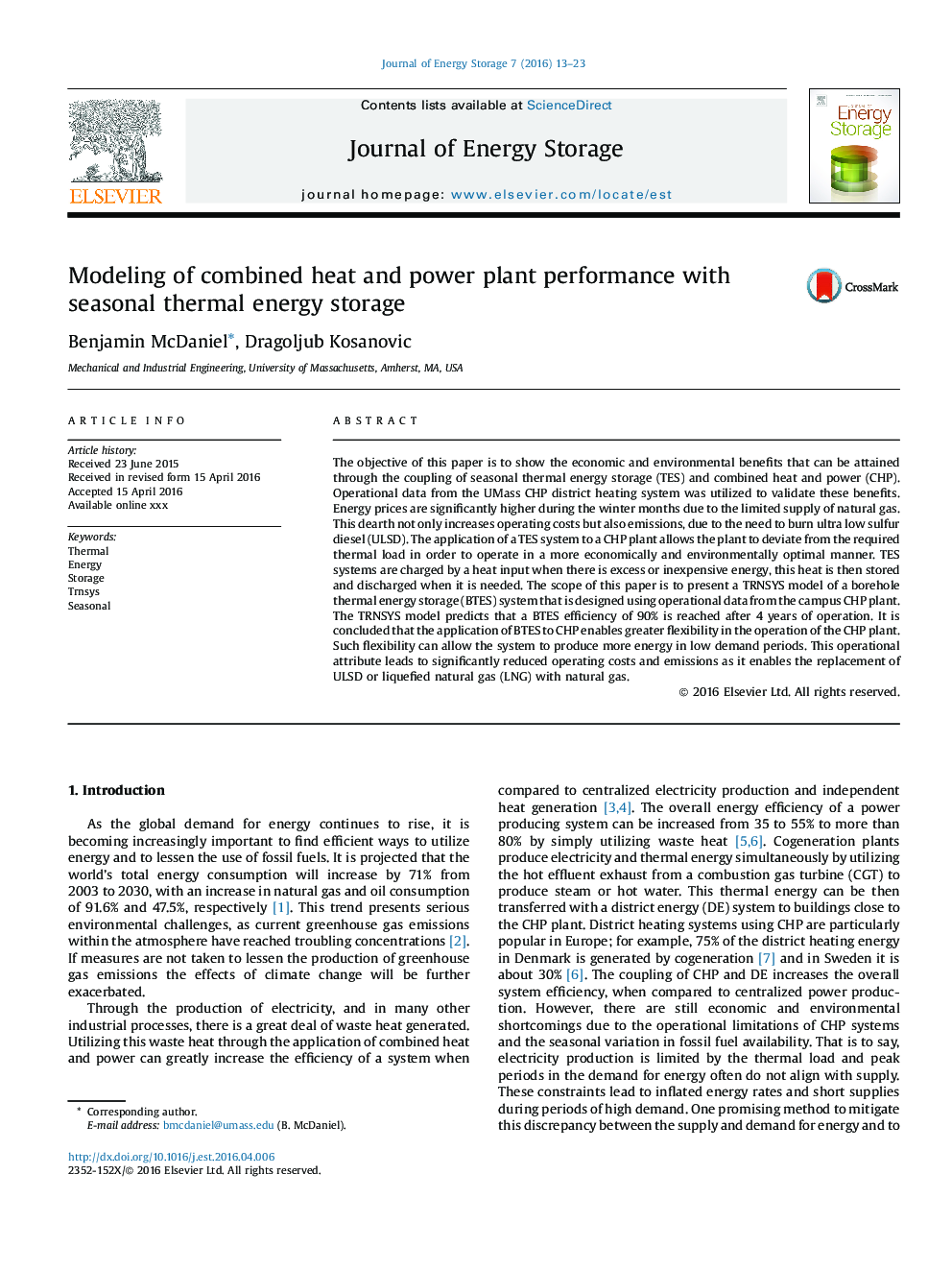| Article ID | Journal | Published Year | Pages | File Type |
|---|---|---|---|---|
| 1133058 | Journal of Energy Storage | 2016 | 11 Pages |
•A seasonal TES system was used to optimize CHP system economic performance and reduce total annual emissions.•Coupling of BTES to CHP enables greater flexibility in the operation of the CHP plant.•Added flexibility allows for strategic operation of the plant, where additional thermal energy can be produced at economically advantageous times in order to hedge against seasonal variations in fossil fuel rates.•A BTES efficiency of 90% was reached after 4 years of operation.•CO2 and SO2 emissions were reduced by 1,003,794 kg and 4790 kg, respectively.
The objective of this paper is to show the economic and environmental benefits that can be attained through the coupling of seasonal thermal energy storage (TES) and combined heat and power (CHP). Operational data from the UMass CHP district heating system was utilized to validate these benefits. Energy prices are significantly higher during the winter months due to the limited supply of natural gas. This dearth not only increases operating costs but also emissions, due to the need to burn ultra low sulfur diesel (ULSD). The application of a TES system to a CHP plant allows the plant to deviate from the required thermal load in order to operate in a more economically and environmentally optimal manner. TES systems are charged by a heat input when there is excess or inexpensive energy, this heat is then stored and discharged when it is needed. The scope of this paper is to present a TRNSYS model of a borehole thermal energy storage (BTES) system that is designed using operational data from the campus CHP plant. The TRNSYS model predicts that a BTES efficiency of 90% is reached after 4 years of operation. It is concluded that the application of BTES to CHP enables greater flexibility in the operation of the CHP plant. Such flexibility can allow the system to produce more energy in low demand periods. This operational attribute leads to significantly reduced operating costs and emissions as it enables the replacement of ULSD or liquefied natural gas (LNG) with natural gas.
